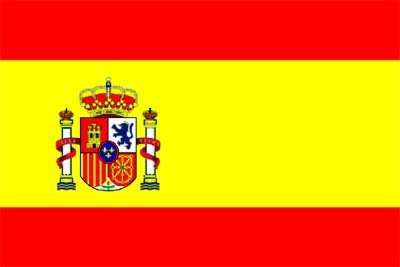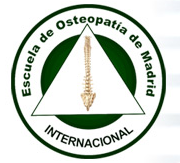The kidneys consist of three different types of tissue that developed during different times of evolution and are controlled from different areas in the brain.
 | THE KIDNEY COLLECTING TUBULES (KCT) The kidney collecting tubules (KCT), the oldest tissue of the kidneys, are controlled from the oldest part of the brain, which is the brain stem. Since the kidney tubules developed from intestinal tissue, they have - like the intestines - sensory, secretory, resorptive, and motoric functions. The prime function of the kidney collecting tubules is to collect the urine produced in the kidney parenchyma. From the kidney tubules the urine flows through the renal pelvis and the ureter to the bladder, from where it is eliminated through the urethra. |
The biological conflict linked to the Kidney Tubules is an...
- EXISTENCE conflict (“having lost everything”, feeling "bombed out”, “my life or livelihood is at stake”)
- refugee conflict (feeling like “in the desert” or a like “fish out of water”)
- profound abandonment conflict (feeling isolated, excluded, or utterly alone)
- hospitalization conflict (a fear of being hospitalized, feeling isolated from the family)
The origin of the “existence conflict” goes back to the time when our evolutionary ancestors were still living in the ocean and the incident of being accidentally “thrown on shore” posed an acute life-threatening situation. In order to prevent the organism from drying out, the cells of the kidney tubules quickly proliferate with the biological purpose of closing the excretion filter so that water can be withheld to give the organism a chance to survive. The instant activation of this water retention program is vital, because without water all metabolic processes stop functioning!
We humans, as well as all animals living on land, are also born with this age-old biological survival program.
A man, for example, can suffer an “existence conflict”, if he is unexpectedly transferred by his company to a far away location. The unprepared-for “move” can be perceived as a “refugee conflict” or as a conflict of feeling ‘thrown into the desert’. The same can be experienced by his wife and his children who feel alone and isolated from friends they had to leave behind. As a result of the water retention all family members will gain weight.
Abandonment conflicts are typically experienced by older people who are pushed off into nursing homes, or by small children who are put into day-care. Cancer patients undergoing, for example, a chemo treatment or an operation are often stressed because of an existence conflict (“my life is at stake”) or other conflicts of an existential nature.
During the conflict active phase a compact kidney tumor forms between the kidney collecting tubules and the calyces (the cup-shaped urine collecting area) causing water retention. Depending on the intensity and duration of the conflict, the human body can retain 5 – 10 kg (= 10 liter) of water; if both kidneys are involved up to 20 kg = 20 liters.
Urine consists 95% of water and 5% of uric substances. Thus, when the organism (psyche, brain, and organ) is conflict active with an existence/abandonment conflict, not only water is retained, but also uric substances, such as creatinine. Just as the retention of water is biologically significant, so is the retention of creatinine. For our evolutionary ancestors the biological conflict of being “thrown on land” (thrown out of the familiar water environment) also meant - in addition to the danger of drying out – that there was a threat of starvation, particularly that of dying from protein deficiency.
For this emergency situation Nature created yet another biological back-up program. Normally, creatinine, an organic nitrogen-carbon compound and a waste product of the protein metabolism, is eliminated through the urine. However, in the urgent event of an existence conflict, the organism is able to recycle retained uric substances into protein in order to prevent starvation! Put another way: in times of need our organism is able to supply itself with water as well as with proteins in order to overcome a biological crisis.
Conventional medicine (the “Old Medicine”) assumes that uremia (the rise of uric substances) is caused by “kidney insufficiency” - an inability of the kidney to eliminate the waste products of the protein metabolism. It is further believed that an “insufficiency” of both kidneys could cause kidney failure, which - without dialysis - would lead to death. Based on the biological laws of the “New Medicine” it becomes evident, however, that uremia is not really a “disease” but rather an age-old SBS (Significant Biological Special Program) which has the purpose of storing water and uremic substances in case water and protein are not available for a longer period of time.
It should be noted that the kidneys always eliminate a minimum of 150-250ml of urine – even with “anuria” (“no” urine production), i.e. a kidney cannot really “fail”.
If a kidney tumor is surgically removed, the next existence conflict relapse (or new existence conflict) impacts the opposite KCT-brain relay. The impact instantly initiates the formation of a new kidney tumor in the other kidney, because the water retention survival program has absolute priority. Orthodox medicine interprets the growth of a tumor in the other kidney as “metastasis”, imagining that the tumor cells are “swimming across” from one kidney to the other – accidentally, of course.
Oliguria, a decreased urine output, regarded by conventional medicine also as “kidney insufficiency”, is the result of at least two active kidney collecting tubule-SBSs involving both kidneys and consequently both KCT control centers in the brain stem (for the right and the left kidney). In German New Medicine, we call this a “Schizophrenic Constellation”.
Typically, patients with a Kidney Collecting Tubule Constellation are disoriented and literally and/or figuratively “lost”. This, however, is also biologically meaningful, because the disorientation allows the one that feels “like a fish out of water” to be picked up by the next wave and carried back into the familiar (water) environment.
During the healing phase the kidney tumor is removed with the help of tubercular bacteria, provided the patient was carrying the TB-bacteria at the time when the existence conflict took place. That is to say, that kidney tuberculosis is the natural decomposing process of a cancer in the kidney collecting tubules. In conventional medicine it is unknown that this type of cancer actually originates in the KCT (Kidney Collecting Tubules).
Until now we thought that all tumors needed to be surgically removed or poisoned with Chemo. But with tuberculosis Mother Nature created a surgical modus operandi that is much more effective than any procedure we could ever come up with.
We have to bear in mind here that every relapse of the existence/abandonment conflict interrupts the healing process, causing a chronic condition. As a result, the kidney tubules become smaller and smaller over time due to the ongoing tissue loss - a clinical picture known as “Nephrotic Syndrome”.
Typical symptoms of the tubercular healing phase are night sweats as well as albuminuria, a higher than normal output of protein through the urine. If, for some reason, the patient is unable to make up for the protein loss through a protein-rich diet or oral supplementation, the protein deficiency (hypoproteinemia) needs to be corrected through albumin infusions until the healing phase is complete. This rule applies to all old-brain controlled cancers, such as lung cancer, liver cancer, colon cancer, breast gland cancer, etc.
An informed patient handles the night sweats much better than one who is unprepared. The latter often panics, particularly when the sweating is excessive. Night sweats are always a positive sign that the TB-bacteria are in the process of removing a tumor that is no longer needed. At the end of the healing phase, both the night sweats and albuminuria stop. If TB-bacteria were not present, the tumor encapsulates and stays in place!
It is important to mention that the uric substance parameters go back to normal with the resolution (CL) of the existence/abandonment conflict. In fact, the water that has been retained during the conflict-active phase starts being released as soon as the conflict is resolved. Depending on the degree of the water retention (which is proportional to the intensity of the conflict activity), this “urinary phase” can be excessive.
THE KIDNEY COLLECTING TUBULE “SYNDROME”
What we call in German New Medicine the “Syndrome” is a combination of TWO Significant Biological Special Programs (SBS). The “Syndrome” involves:
2. any other SBS that is in the healing phase
When the organism withholds water because of an active existence conflict, water is also abundantly stored in the edema around the organ or tissue that is in healing at the same time. The water retention increases the swelling as well as the size of such cancers as intra-ductal breast cancer, cervical cancer, ovarian cancer, testicular cancer, bronchial cancer, lymphoma, etc. Due to water retention, kidney cysts, ovarian cysts, testicular cysts, or cysts in the spleen can enlarge considerably and might even burst.
Thus, it is not only the duration and the intensity of the preceding conflict that determines the degree of the swelling of a healing organ, but also the “Syndrome” with water retention during the conflict-active phase.
The “Syndrome” is of utmost clinical significance, because there is
- no pleural effusion without the Syndrome
- no hepatomegaly without the Syndrome
- no ascitis without the Syndrome
- no gout without the Syndrome
- no large brain edema without the Syndrome
Normally, the secretion of serous fluid from the pleura (during the healing phase of a literal or figurative “attack against the chest”) is naturally absorbed by the pleural membrane. However, with simultaneous water retention (“Syndrome”), the pleural effusion can cause a serious medical condition with severe breathing difficulties and a necessity of draining the fluid (however, puncturing the pleura can trigger a new “attack conflict”!). The same principle applies to an ascitis the accumulation of fluid in the abdominal cavity in the healing phase of an “attack against the abdomen”.
With the “Syndrome” (water retention during the ca-phase), a small “territorial anger conflict” with hepatitis in the healing phase can all of a sudden turn into acute hepatomegaly (enlarged liver), which the patient might not be able to survive, particularly if there are continuous conflict relapses.
Gout is an inflammation of the joint with the typical painful gout nodes. With gout, the uric acid level is elevated, which is the reason for the belief that a vegetarian diet could alleviate the pain. According to German New Medicine, gout is the healing phase of a bone-Significant Biological Special Program (self-devaluation conflict) involving the “Syndrome.
A brain edema (which always occurs during pcl-A parallel to the healing on the correlating organ) also accumulates more water when water is retained. This can result in serious, and even fatal, medical complications, particularly during the epileptic/epileptoid crisis (heart attack, stroke, …
KIDNEY PARENCHYMA
 | The kidney parenchyma developed at a time when our evolutionary ancestors had already moved on land and water itself had become a potential danger, for example through floods. While the kidney collecting tubules (endodermal tissue controlled from the brain stem) relates to the biological conflict of water deprivation, the conflict linked to the kidney parenchyma (mesodermal tissue controlled from the midbrain, located in the low cerebrum) is a conflict that relates to an unexpected distressful event involving water- or fluid – in GNM referred to as a water- or fluid conflict. |
As is the case with all organs that are controlled from the cerebrum, a tissue loss takes place during the conflict-active phase. A necrosis of the kidney always causes the blood pressure to rise. And this is why: after we had “moved on land”, so-to-speak, the excretion of urine was no longer regulated through the intestine, but was now connected to the blood circulation and the ability of the kidneys to filter blood and produce urine. In case of a loss of kidney tissue due to a water conflict, the circulatory blood pressure automatically went up in order to make sure that the kidney can continue its functions, in spite of necrosis. Hence, the biological purpose of the hypertension is to compensate for the tissue loss (holes) in the kidney to ensure that sufficient urine and uric substances are eliminated. Naturally, the blood pressure remains elevated as long as the water conflict is active. The more intense the water conflict, the higher the blood pressure.
Based on my research, the vast majority of cases of hypertension correlate to the kidney parenchyma and a water- and fluid conflict. A water conflict can be caused by a scary near-drowning experience, but also through unexpected ‘flooding’ of the house caused by a broken pipe or a leaky roof, and similar situations. Usually, within a short period of time the ‘problem’ becomes irrelevant and the conflict resolves itself.
Conditions termed “unstable hypertension” or “chronic hypertension” are not really of a different nature, but rather indicate that a water conflict is either constantly active (“chronic”) or has been resolved now and again (“unstable”).
A cirrhotic kidney is the result of conflict activity that lasts over a long period of time.
Healing phase: with the resolution of the water conflict, a cyst filled with fluid forms at the site of the necrosis. Inside the cyst, the kidney cells quickly proliferate, in order to replenish the tissue loss that took place in the conflict-active phase. During the period when the kidney cyst develops, the cyst attaches itself temporarily (!) to neighboring tissue for blood supply. Discovered at this stage, conventional medicine misinterprets the “growth” as a malignant “invasive kidney tumor”, which is then treated with the usual pseudo-therapy instead of waiting calmly until the cyst has hardened (indurated). Because, within nine months, provided there is no conflict relapse, the fluid filled cyst becomes hard and partakes in all of the kidney’s functions, including the production of urine.
That is precisely the biological purpose of this particular SBS-Significant Biological Special Program. The additional kidney tissue provided by the cyst (which has now its own blood supply) puts the individual in a better position in the event of another water- or fluid conflict (see also biological significance of ovarian cyst and testicular cysts. In conventional medicine such a biologically meaningful kidney cyst is called a malignant “nephroblastoma” (kidney cancer) or “Wilm’s Tumor”.
At the end of the healing phase, the blood pressure also returns back to normal.
Occasionally, a liquid cyst can burst if the edematous pressure is too strong. This can be caused, for example, by a simultaneous active existence conflict with water retention (“Syndrome), often triggered by the kidney tumor diagnosis itself!
In general, the size of the cyst is proportional to the intensity and duration of the water conflict. Should a kidney cyst become so large that is it mechanically bothersome, one can always have the cyst surgically removed – but only after it has been completely hard, and without taking out the whole kidney!
Another healing symptom that can occur during the repair phase of the kidney parenchyma is “glomerulonephritis”, an inflammation of the glomeruli or small blood vessels in the kidneys.
ADRENAL CORTEX
 |
As far as the adrenal cortex (controlled from the cerebral medulla) is concerned, it is the conflict of “having gone into the wrong direction” or “being off course” that causes an adrenal cortex necrosis during the conflict-active phase. Because of the loss of adrenal cortex tissue, less cortisol is being produced, which serves the biological purpose of halting the individual on the wrong path. Here we find “Addisons Disease”.
During the healing phase, a fluid filled adrenal cyst forms at the site of the necrosis. Inside the cyst, the adrenal cells quickly multiply in order to refill the tissue loss that occurred in the conflict-active phase. Essentially, the same process takes place as it does with the kidney parenchyma. In conventional medicine, the cyst is considered a malignant “adrenal cancer” at this stage. The fact is that, at the end of the healing process, the “tumor” will have become a hard cyst and an integral part of the adrenal cortex. A large cyst results in an overproduction of cortisol, a condition referred to as “Cushing’s Syndrome”.
|
RENAL PELVIS
During a later time of evolution the renal pelvis was lined with a squamous epithelial cell layer. Since the lining of the renal pelvis consists, evolutionarily speaking, of the “youngest tissue” (ectoderm), it is controlled from the youngest part of the brain, which is the cerebral cortex. Accordingly, the related biological conflict is also of an advanced nature.
The conflict linked to the renal pelvis (as well as to the bladder, urethra, and ureter) is a territorial marking conflict caused by an unexpected invasion or intrusion of our domain, and an inability to establish inner (female) or outer (male) boundaries.
During the conflict-active phase, the lining of the kidney pelvis ulcerates. The biological purpose of the tissue loss is to widen the renal pelvis (urethra/ureter) to be better able to “mark the territory”. Beginning with the healing phase, the ulcerated area is replenished with new cells. Typically, the renal pelvis heals with inflammation. During the healing phase of the territorial marking conflict, we also find bladder infections.
German New Medicine
Go to Content










 Master PCMH Criteria with Upcoming Webinars
Master PCMH Criteria with Upcoming Webinars







 The American Osteopathic Association (AOA) is the representative organization for the over 70,000 osteopathic physicians (DOs) and 18,000 osteopathic medical students in the United States. The organization promotes public health, encourages scientific research, serves as the primary certifying body...
The American Osteopathic Association (AOA) is the representative organization for the over 70,000 osteopathic physicians (DOs) and 18,000 osteopathic medical students in the United States. The organization promotes public health, encourages scientific research, serves as the primary certifying body...










 9:32
9:32
 Daniel Enriquez de Guevara
Daniel Enriquez de Guevara













.jpg)


















0 comentarios:
Publicar un comentario